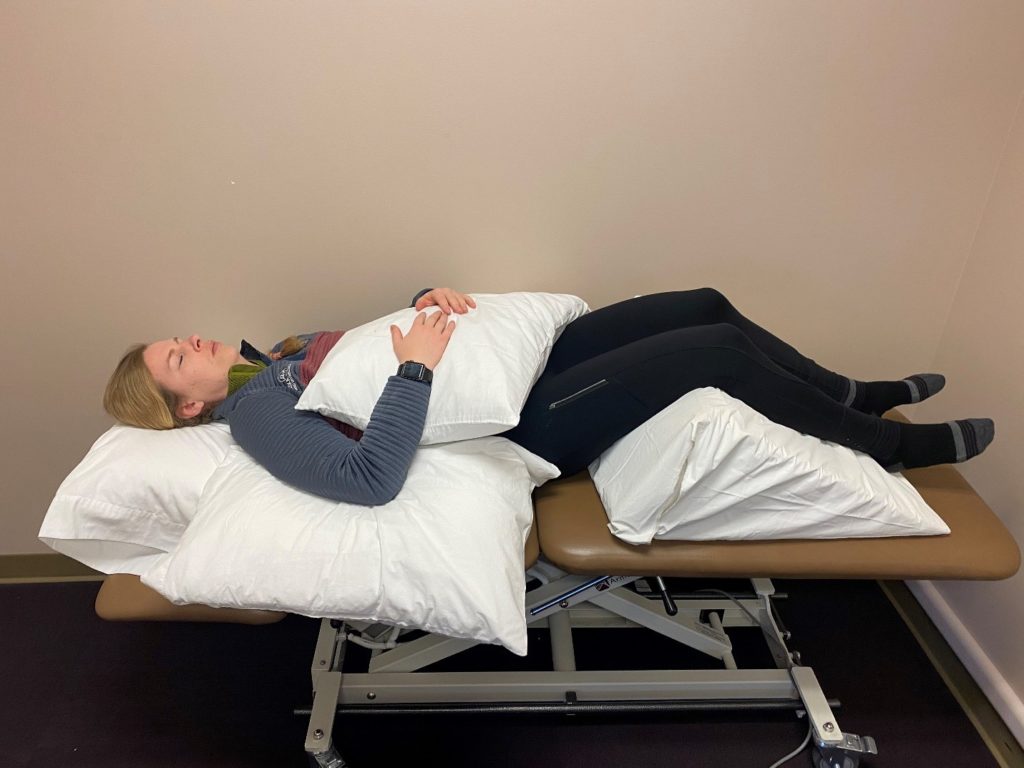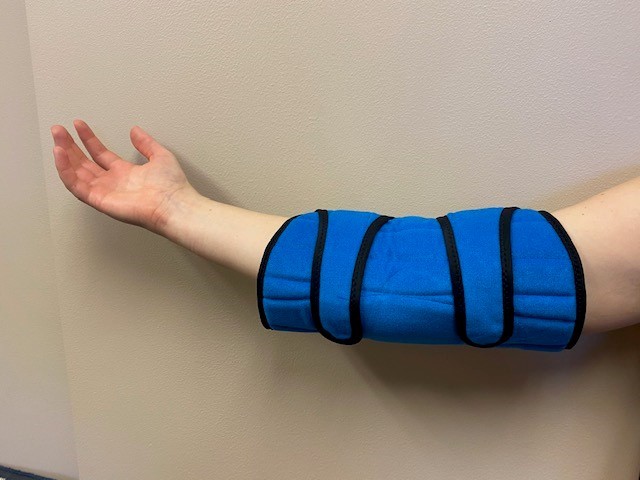Have you ever woken up with numbness, tingling, burning or pain in your hands? The culprit may be your sleep positions. You may be sleeping in a position that places compression or tension on the nerves in your neck, arms or hands causing these symptoms.
Why Do Sleep Positions Matter?
On average, we spend about a third of our lives sleeping or attempting to. Sleep plays an important role in our daily function. It helps to repair and restore our tissue from the wear and tear placed on our body with everyday tasks. The right sleeping positions are important to prevent compression and/or tension on our joints, spine and tissue. That compression/tension could lead to numbness, tingling, swelling and/or pain in our hands.
Many of the conditions hand therapists treat such as carpal tunnel, cubital tunnel, thoracic outlet syndrome, tendinopathies, and arthritis can be made worse from improper sleep positions. For example, many people sleep in a fetal position with elbows and wrists in a bent position. In this position the nerves in our wrist and elbows can become compressed and this may exacerbate numbness and tingling in our hands.
Another example, a pillow that is too big can place the neck too far forward or bent to the side. This positioning can place stress on the cervical spine and cause increased risk for compression of the nerves. Long term compression or tension placed on our nerves can cause permanent nerve damage and may then require surgical intervention.
Improving How You Sleep
The majority of people sleep on their back or side. Below you will find tips, pictures and a supporting rationale that is designed to help improve your sleeping position.
Back Sleeper
The goal is to keep your spine and neck in neutral alignment. Start by placing a pillow or wedge underneath the knees to allow the lower back to lay flat. Use a pillow that keeps the neck in a neutral position (not too high and not too low). Small pillows may be placed underneath each elbow for support to maintain neutral alignment of the arms and shoulders. A small pillow may be placed underneath the wrists and hands to help maintain a neutral position.
Sleeping in this position helps to decrease the amount of stress placed on the cervical, thoracic, and lumbar spine. The elbow and wrists are supported and in a position where they are not too flexed or straight. This helps to minimize compression of the nerves in the arms and wrists and allows adequate blood flow to the hands.

Side Sleeper
The goal is to achieve neutral alignment from your neck to your hips. Start by placing a pillow between the knees to help align the hips and spine. Place a pillow between your side and arm to support the shoulder and elbow. Maintain a neutral position of the wrist (prevent the fetal position). Alternatively, you may use a larger body pillow to support the arm and shoulder.
For the arm on the mattress side, place a pillow underneath the shoulder. Avoid curling the hand underneath your head as this increases the pressure in the nerves at your wrist. Place a pillow under your head that cradles the neck in a neutral position that is parallel to the mattress. Make sure you do not curl your knees too high to avoid tension on the nerves.

How Braces Can Help
In addition to the use of pillow supports to improve sleep positions, braces for the wrists and elbow are often recommended. Braces help to keep the wrist and elbow from bending too much. They also maintain proper position to prevent compression to the nerves and vessels while we sleep.
This brace helps to maintain a neutral position of the wrist to decrease carpal tunnel symptoms (compression of the median nerve at the wrist).

The brace below is called a Pil-O-Splint and is used to prevent the elbow from bending too much while sleeping. This prevents increased pressure on the nerves as they pass through the elbow.

In Summary
Changing lifelong sleep habits is not an easy task and takes time. I hope the tips provided in this post will help decrease the symptoms of numbness, tingling, burning or pain in your hands.
If your symptoms continue, contact our office to schedule a free screen by a Certified Hand Therapist. During this session they will discuss specific exercises and possible bracing/splints to help decrease or eliminate your symptoms.
Written By: Allison Horazdovsky, OTD, OTR/L, CHT

